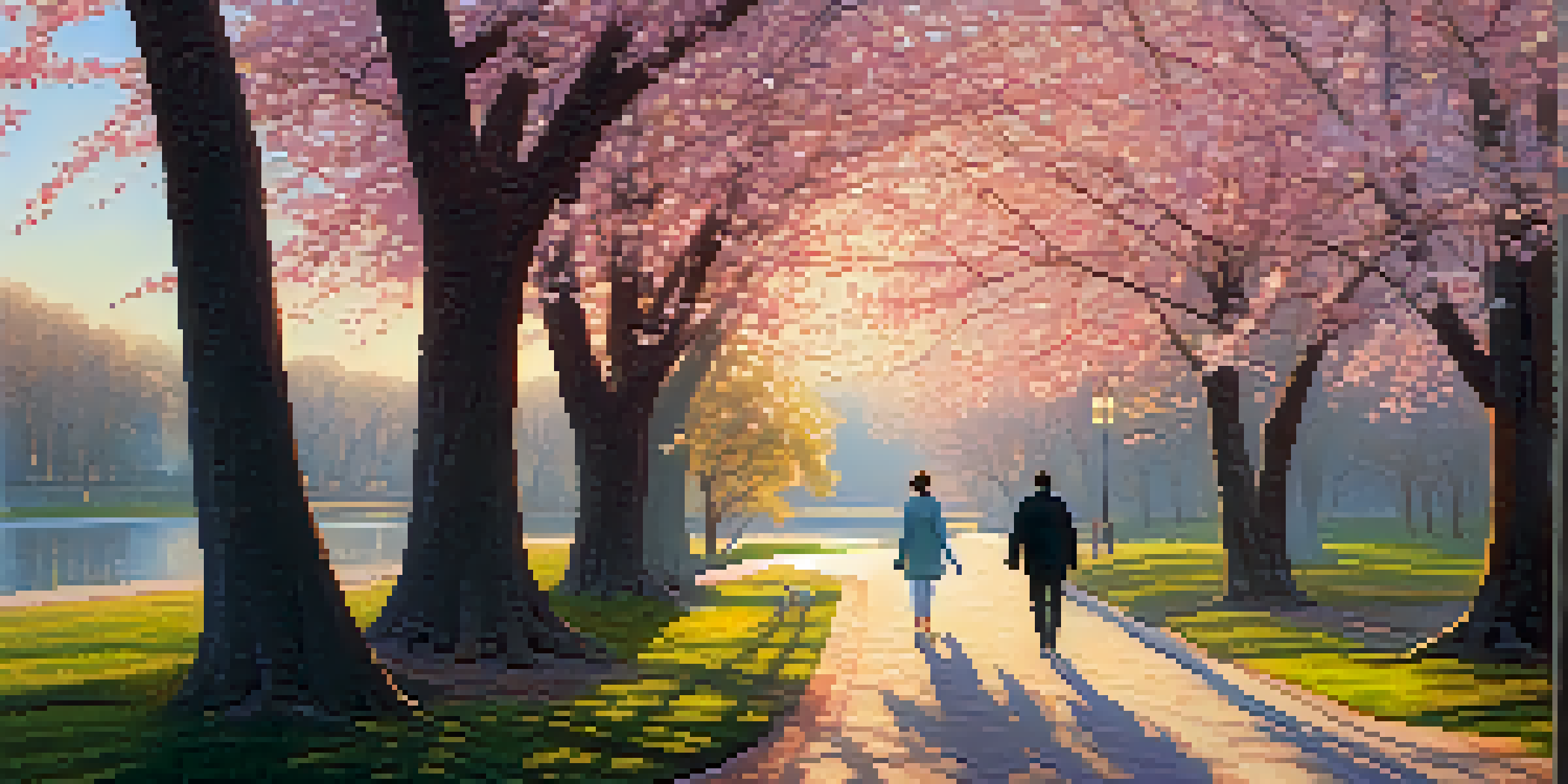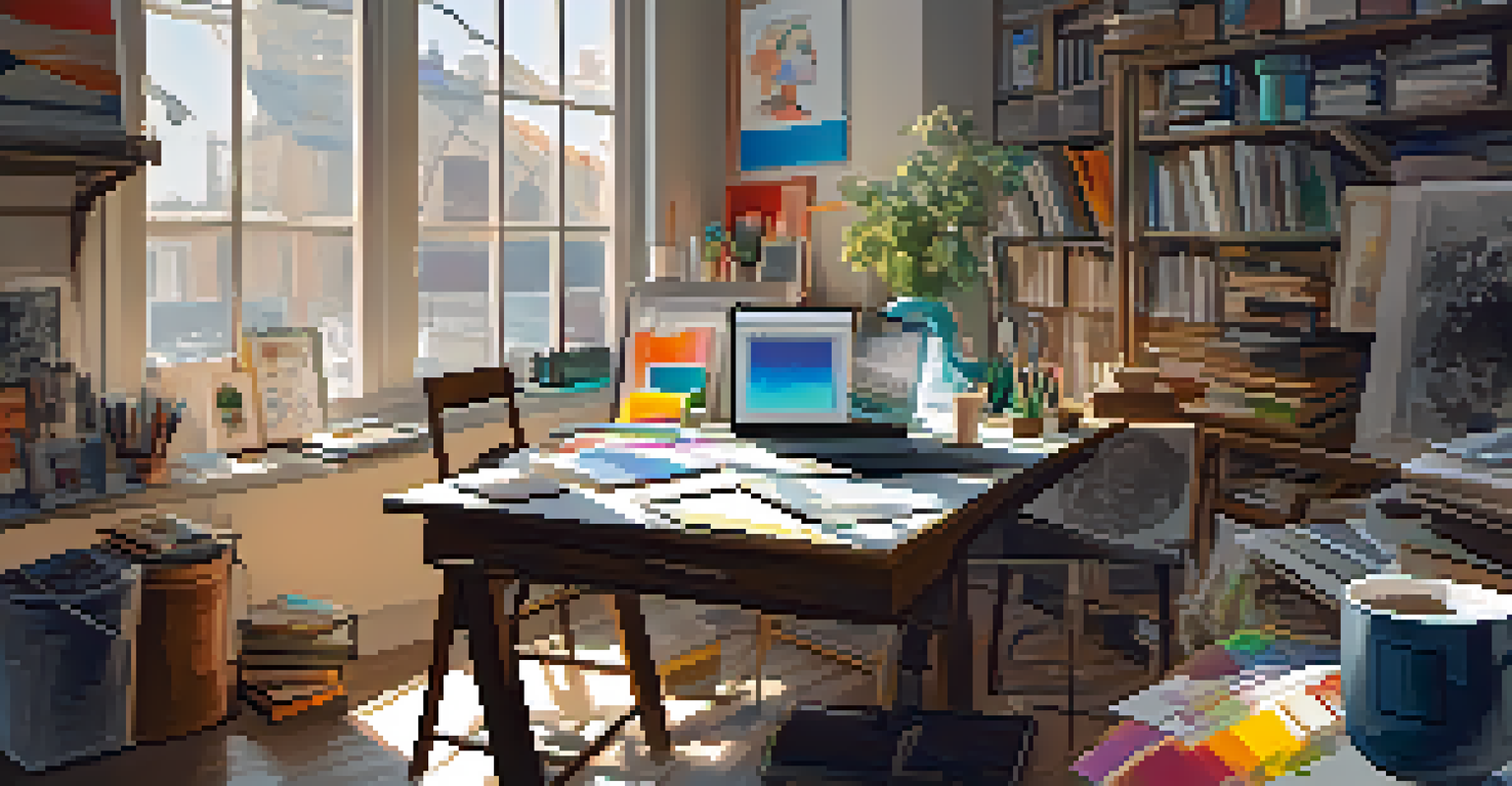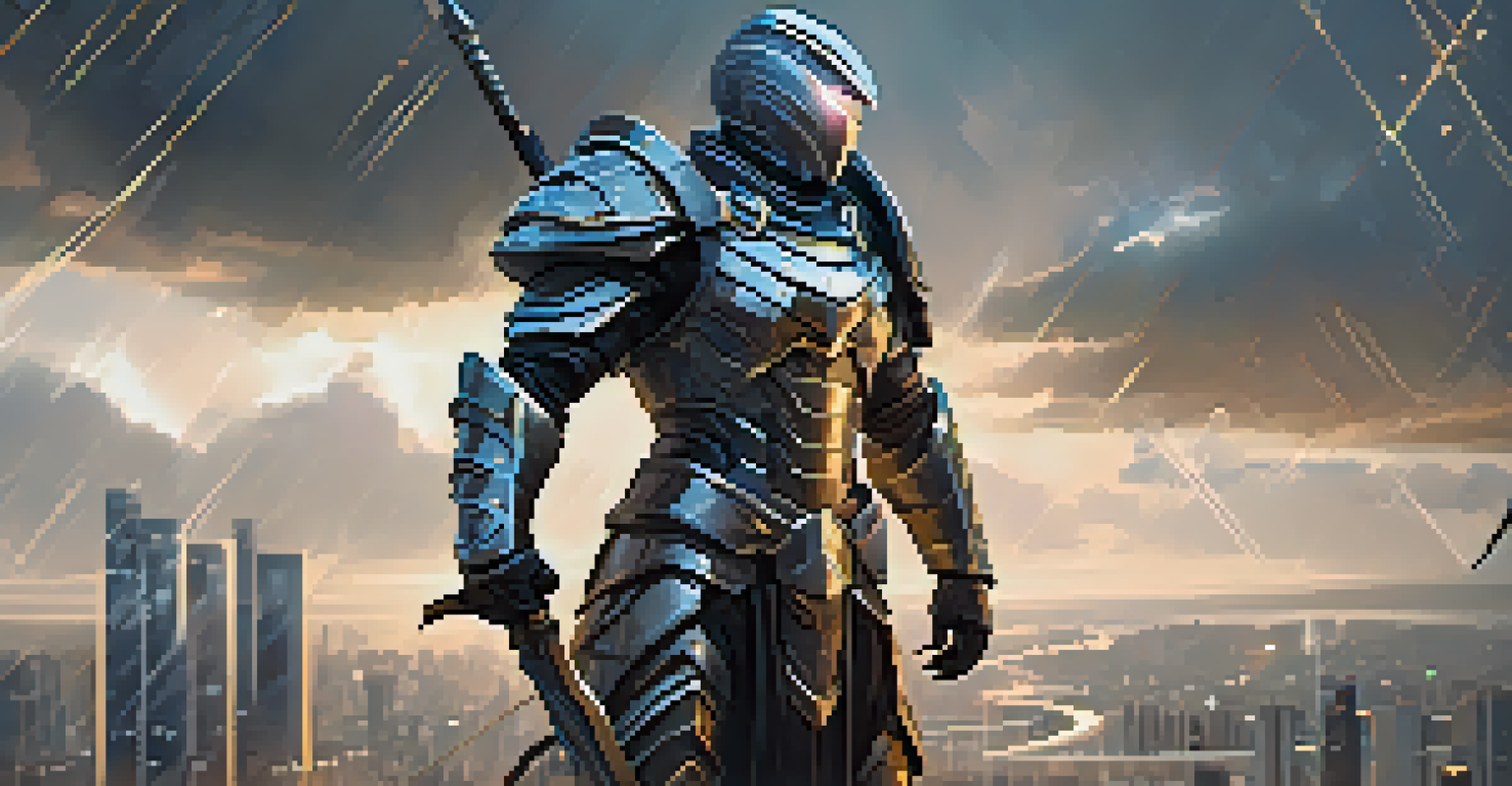Creating Concept Art: A Guide for Aspiring Digital Artists

Understanding Concept Art: What It Is and Its Purpose
Concept art serves as the visual foundation for various creative projects, from video games to films. It helps communicate ideas and establish the overall aesthetic before the actual production begins. Think of it as a blueprint that guides artists and designers, ensuring everyone is on the same page.
Every artist was first an amateur.
At its core, concept art is about exploration and experimentation. Artists create multiple iterations of characters, environments, and objects, allowing creative teams to visualize different directions. This process not only sparks innovation but also helps identify the most compelling ideas early on.
Moreover, concept art plays a critical role in storytelling. Each piece of art conveys emotions and themes, setting the stage for the narrative. For aspiring digital artists, understanding this purpose can inspire them to create visuals that resonate deeply with audiences.
Essential Tools for Digital Concept Artists
The right tools can make a world of difference in your concept art journey. While traditional methods like pencil and paper are great, digital tools offer unique advantages, such as flexibility and ease of editing. Popular software options include Adobe Photoshop, Corel Painter, and Procreate, each tailored to different artistic styles and preferences.

In addition to software, hardware is just as important. A graphics tablet can enhance your drawing experience, providing precision and a natural feel similar to drawing on paper. Brands like Wacom and Huion offer various options for different budgets, making it easier for beginners to find the right fit.
Concept Art Guides Creative Projects
Concept art serves as a visual blueprint that helps align artists and designers on the aesthetic and direction of a project.
Lastly, don't underestimate the power of online resources. Platforms like ArtStation and DeviantArt not only showcase amazing artwork but also provide tutorials and community feedback. Embracing these tools can elevate your skills and help you stay inspired.
Finding Inspiration: Where to Look and What to Consider
Inspiration can strike at the most unexpected moments, so keeping an open mind is essential. Nature, architecture, movies, and even everyday life can spark ideas for your concept art. For instance, a walk in the park might inspire a fantastical creature or a serene environment.
In every work of art the spirit of the age is reflected.
Additionally, exploring existing artwork can fuel your creativity. Study the works of renowned artists, analyze their techniques, and see what resonates with you. Websites like Pinterest and Behance are treasure troves of visual inspiration that can lead you to create something uniquely yours.
Finally, don't forget about sketching your ideas. Carrying a sketchbook allows you to capture fleeting thoughts and concepts whenever they arise. These rough sketches can serve as the foundation for more detailed pieces, making it easier to develop your ideas further.
The Importance of Composition in Concept Art
Composition is a fundamental aspect of creating compelling concept art. It refers to how elements are arranged within a piece, guiding the viewer's eye and emphasizing key aspects. A well-composed artwork can evoke emotions and create a sense of balance, making it visually appealing.
One effective way to understand composition is by studying the rule of thirds. This guideline suggests dividing your canvas into nine equal parts and placing focal points along these lines or their intersections. By doing so, you create a more dynamic and engaging composition that draws in the audience.
Tools Enhance Digital Art Creation
Utilizing the right software and hardware can significantly improve the efficiency and quality of your concept art.
Experimenting with different compositions can also lead to exciting discoveries. Don't be afraid to play around with perspectives, asymmetry, and negative space. These techniques can add depth and intrigue to your artwork, making it stand out in a crowded field.
Color Theory: Choosing the Right Palette for Your Art
Color theory is a vital component of concept art, influencing mood and atmosphere. Understanding how colors interact can help you choose the right palette for your projects. For example, warm colors like reds and oranges can evoke feelings of excitement or danger, while cool colors like blues and greens often create a sense of calm.
Experimenting with color harmony can enhance your artwork as well. Techniques like complementary colors, which are opposite each other on the color wheel, can create striking contrasts that grab attention. Additionally, analogous colors, which sit next to each other, can produce a more cohesive and harmonious look.
Finally, don't shy away from using color to tell a story. Consider how different hues can represent emotions or themes within your concept art. By thoughtfully selecting your colors, you can elevate your work and engage your audience on a deeper level.
Developing Characters: Bringing Your Ideas to Life
Character design is one of the most exciting aspects of concept art, allowing you to bring your imagination to life. Start by defining your character's personality, backstory, and role within the story. This foundation will guide your design choices and help you create a visually compelling character.
Once you have a clear understanding of your character, begin sketching various poses and expressions. This will not only help you explore their physical appearance but also convey their emotions and personality traits. Consider how different clothing styles and accessories can further enhance your character's identity.
Color and Composition Matter
Understanding color theory and composition techniques is essential for creating visually engaging and emotionally resonant concept art.
Finally, don't hesitate to seek feedback from peers or mentors. Sharing your work can provide valuable insights and help you refine your character design. Collaboration and constructive criticism can lead to breakthroughs that elevate your art to new heights.
Finalizing Your Concept Art: Tips for Polishing Your Work
Once you've created your concept art, the next step is to refine and polish your work. Start by reviewing your piece critically, looking for areas that may need improvement or additional detail. This self-assessment can help you identify any inconsistencies or elements that might benefit from further development.
Incorporating feedback is also crucial at this stage. Share your work with fellow artists or friends who can provide fresh perspectives. Their insights can help you see your art through different lenses and inspire changes that enhance the overall quality.

Lastly, remember that practice makes perfect. Don't be discouraged if your first attempts don't meet your expectations. Embrace the learning process, keep experimenting, and allow your style to evolve over time. With dedication and patience, your concept art skills will continue to grow.